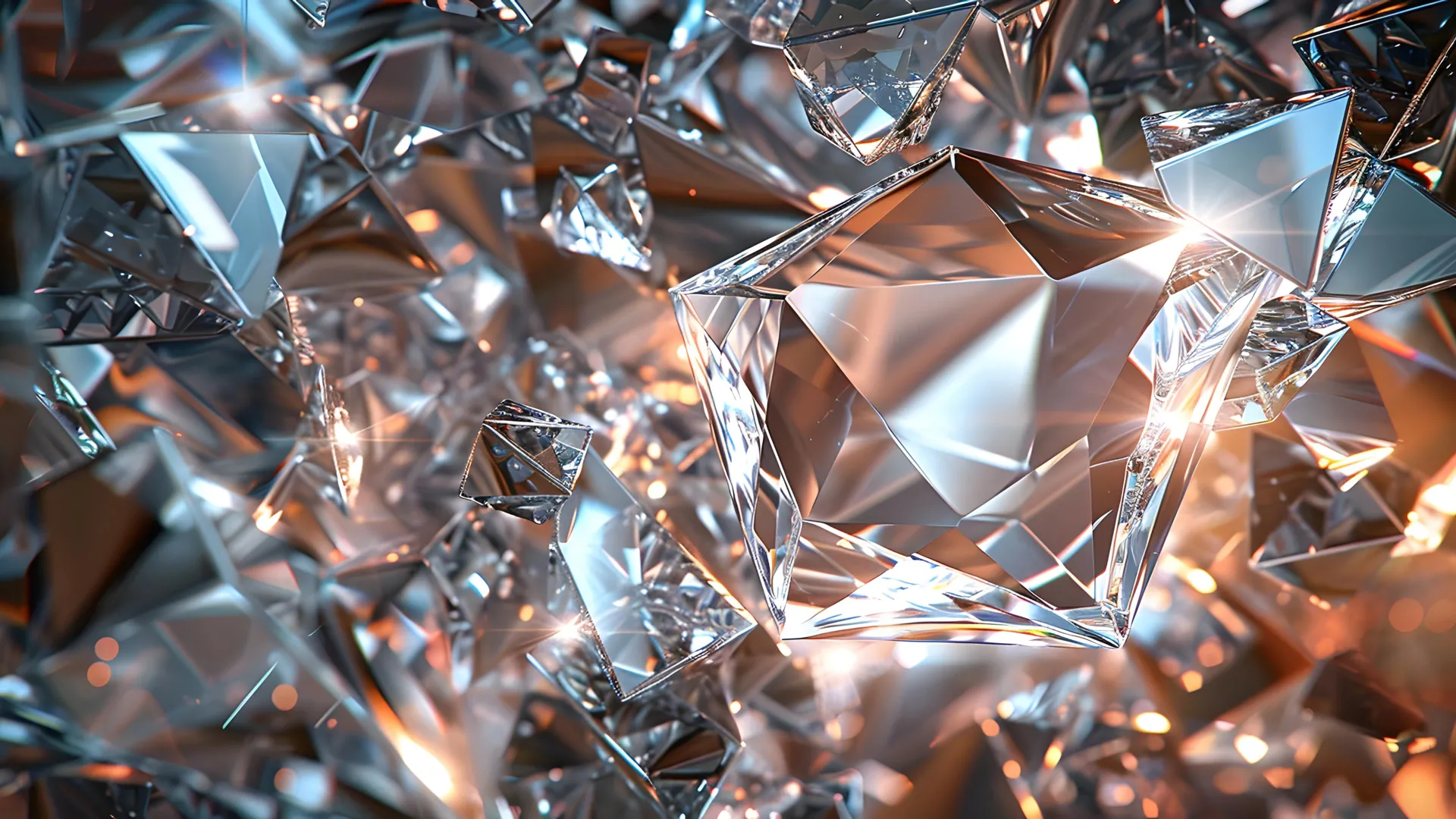Scientists just found a material that beats diamond at its own game
- Date:
- November 12, 2025
- Source:
- University of Houston
- Summary:
- Boron arsenide has dethroned diamond as the best heat conductor, thanks to refined crystal purity and improved synthesis methods. This discovery could transform next-generation electronics by combining record-breaking thermal conductivity with strong semiconductor properties.
- Share:

Researchers at the University of Houston have achieved a major scientific milestone in the study of heat transfer. Their new findings overturn long-standing assumptions about thermal conductivity and reveal that boron arsenide (BAs) can conduct heat more effectively than diamond, which has long been considered the benchmark among isotropic materials.
The research team discovered that when BAs crystals are produced with exceptional purity, they can reach thermal conductivity values greater than 2,100 watts per meter per Kelvin (W/mK) at room temperature -- possibly surpassing diamond itself.
Published in Materials Today, the study challenges existing theoretical models and could reshape how scientists think about heat movement through solid materials. The results also point to a promising new semiconductor option for devices that demand advanced thermal management, including smartphones, high-power electronics, and data centers.
"We trust our measurement; our data is correct and that means the theory needs correction," said Zhifeng Ren, corresponding author and a professor of physics in UH's College of Natural Sciences and Mathematics. "I'm not saying the theory is wrong, but an adjustment needs to be made to be consistent with the experimental data."
Breaking Through Long-Held Limits
The discovery emerged from a collaboration among the University of Houston's Texas Center for Superconductivity (directed by Ren), the University of California, Santa Barbara, and Boston College.
For more than a decade, boron arsenide has intrigued scientists. In 2013, Boston College physicist and study co-author David Broido and colleagues predicted that BAs could theoretically conduct heat as efficiently -- or even better -- than diamond. However, revised models in 2017 added a complex factor known as four-phonon scattering, which reduced predicted performance to around 1,360 W/mK. This caused many in the field to abandon the idea that BAs could exceed diamond's conductivity.
Ren's group, however, suspected the problem wasn't the material's intrinsic ability but the impurities within it. Earlier experimental samples contained defects that limited performance to about 1,300 W/mK, well below the ideal conditions used in theoretical predictions.
Cleaner Crystals, Record-Breaking Results
By refining raw arsenic and developing improved synthesis methods, the UH-led team created boron arsenide crystals with significantly fewer imperfections. When tested, these high-purity samples demonstrated a remarkable thermal conductivity above 2,100 W/mK -- surpassing not only earlier experimental results but also the theoretical ceiling itself.
This achievement confirms that material purity plays a decisive role in heat transfer performance and opens a path toward even more efficient heat-conducting materials.
Why the Discovery Matters
The implications of this breakthrough extend far beyond laboratory measurements. Boron arsenide has the potential to revolutionize electronics and semiconductor technology by providing a material that both dissipates heat effectively and performs as a high-quality semiconductor.
Its advantages include:
- Easier and more cost-effective manufacturing compared to diamond, without the need for extreme temperature or pressure.
- Exceptional thermal conductivity combined with efficient semiconductor behavior.
- Potentially superior electronic performance compared to silicon due to its high carrier mobility, wide band gap, and well-matched coefficient of thermal expansion.
"This new material, it's so wonderful," Ren said. "It has the best properties of a good semiconductor, and a good thermal conductor -- all sorts of good properties in one material. That has never happened in other semiconducting materials."
Looking Forward: Pushing the Boundaries of Physics
Although this discovery marks a new frontier, the work is ongoing. Researchers at the Texas Center for Superconductivity plan to continue refining their methods, aiming to enhance boron arsenide's performance even further.
The study is part of a $2.8 million National Science Foundation project led by Bolin Liao at UC Santa Barbara, with contributions from the University of Houston, the University of Notre Dame, and UC Irvine. The research also receives partial support from industrial partner Qorvo.
Ren encourages scientists to revisit existing models and challenge theoretical assumptions that may have underestimated materials like BAs.
"You shouldn't let a theory prevent you from discovering something even bigger, and this exactly happened in this work," Ren said.
Story Source:
Materials provided by University of Houston. Note: Content may be edited for style and length.
Journal Reference:
- Ange Benise Niyikiza, Zeyu Xiang, Fanghao Zhang, Fengjiao Pan, Chunhua Li, Matthew Delmont, David Broido, Ying Peng, Bolin Liao, Zhifeng Ren. Thermal conductivity of boron arsenide above 2100 W per meter per Kelvin at room temperature. Materials Today, 2025; 90: 11 DOI: 10.1016/j.mattod.2025.09.021
Cite This Page: